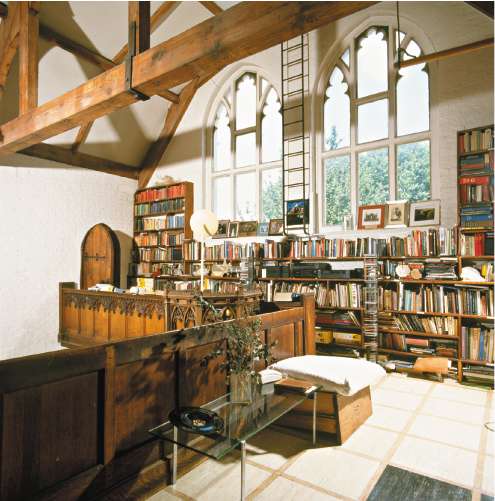
Time was when people converted former non-residential spaces, they did it out of desperation. For a roof over their heads. They didn't actually like the idea of living in a factory or a former laboratory. So they tried their best to normalise it, to make rooms, conventional spaces with familiar names and functions. They put in chipboard doors and tried not to bathe in public, and saved up for the time when they could have a three-up, two-down in a pleasant suburb.
The artistic middle classes had a romantic streak, though. They moved from the between-Wars-novelist's weekend cottage (a 15th-century hovel enlivened with new windows and some cheery chintz) to more adventurous, post-War conversions. Mews in London, of course, but outside it all those mill houses with round rooms and interesting features, bits of early machinery, carefully preserved, which made for good before-dinner house-tour stories. Then, of course, there were barns. Originally cottage-ised with as many dinky rooms as possible, they've gone statementy now, with modern lighting nestling in the sand-blasted structural beams, serious contemporary art and mid-century classics. Barns are trying to be lofts.
Churches came on-stream that bit later. Their original owners took for ever to accept the impossibility of filling and maintaining them. And potential buyers remained spooked long after you'd expect. Would God be cross? Would there be an extra helping of ghosts ("Beneath this slab lies...")? How exactly did they convert anyway? Did you treat them as extra-large fancy barns or as factories-turned- flats? And what was the church look anyway? Were you stuck with Gothic?
As it's turned out there is a church look emerging. And yes, there's usually a lot of Gothic in it, with a bit of barn, too. With big urban churches the converters seem to have accepted that single buyers aren't going to want the whole thing – too big, too worrying – so they've gone for normal-sized flats with some odd features – especially odd truncated Gothic windows. In smaller country churches and church halls, a few brave types have taken it all on, put in a bit of mezzanine and constructed secret worlds involving a lot of old red velvet and giant Knole sofas.
Pictured here is something straight out of a boy's book of wonders. Either it was converted in the late 1970s, sometime between Life on Mars and Ashes to Ashes, or it's been done more recently from skips and sites in a pastiche spirit. I think it's 1970s, and what's the betting it belongs to a photographer?
But my favourite room is the most churchy, the mezzanine library. Full-on windows, masses of books, a lot of trad music system-ry and a ladder to heaven.
Subscribe to Independent Premium to bookmark this article
Want to bookmark your favourite articles and stories to read or reference later? Start your Independent Premium subscription today.

Join our commenting forum
Join thought-provoking conversations, follow other Independent readers and see their replies